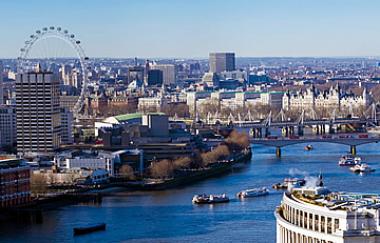Major upswing in London Property Market
 Despite growing fears that the property market is heading for another bubble — central London house prices are up 68% since the market hit rock bottom in March 2009 according to Knight Frank
Despite growing fears that the property market is heading for another bubble — central London house prices are up 68% since the market hit rock bottom in March 2009 according to Knight Frank
SOUTH Africans looking to invest in a pied-à-terre in swanky London boroughs like Knightsbridge, Chelsea or Mayfair are no doubt questioning whether they have missed the boat, given the spectacular recovery in UK house prices over the past three years.
Not necessarily. Despite growing fears that the market is heading for another bubble — central London house prices are up 68% since the market hit rock bottom in March 2009 according to Knight Frank — industry players believe London still offers pockets of value.
The southeast of London, including areas such as Deptford, Greenwich and Bromley, is now the place to be, says George Radford, who heads the SA office of international property investment firm IP Global. The company, whose head office is based in Hong Kong, has invested nearly £500m in UK property on behalf of high net worth individuals since 2009.
Radford says London remains a destination of choice among SA investors, due to the country’s historical ties with the UK and its fairly consistent and predictable returns in a stable currency.
He concedes that some traditionally popular high-end areas of central London have become overvalued.
“That’s why our current focus is on the southeast of London, which is undergoing plenty of gentrification on the back of improved infrastructure development.’’
Radford believes southeast London is benefiting from the Crossrail programme, which is increasing the area’s accessibility to central London. “New rail infrastructure means people who live in Deptford can now commute to the London Bridge within six minutes. As a result, the area is experiencing an influx of young professionals, whitecollar workers and foreign contractors, which is boosting demand for rental accommodation.”
Radford says the UK’s “Help To Buy Scheme”, which allows first-time and second-time domestic buyers to purchase property of up to £600000 with government backed loans, will also help drive up demand and prices in traditionally cheaper areas like the southeast part of London.
He notes investors can buy new one- and two-bedroom apartments off-plan for between £180000 and £380000 in this part of London. These units offer gross rental yields of 4%-5,5%/year.
“So if you gear your purchase with a 60% mortgage at a current interest rate of around 3,5%-4% you will be cash-flow positive from year one.’’
Radford says purchase prices of below £400000 in southeast London compare favourably with the £1m and more buyers would have to pay for similar sized apartments in prime central areas like Kensington or Chelsea. He says southeast London house prices are likely to rise by 25%-30% on average over the next five years.
Chris Immelman, MD of Pam Golding Properties International & Projects Division, says southwest London — an area which has long been a favourite investment hub for South Africans — remains one of the fastest growing areas of greater London The company, in partnership with Savills of UK, is currently marketing a number of residential investment opportunities to SA buyers in southeast London and along the south bank of the River Thames. These include Clapham, Wimbledon, Fulham, Chiswick, Wandsworth and Battersea where townhouse and apartment prices range from around £295000 to £660000.
Immelman says the area through the Albert Embankment and Vauxhall to Battersea, connecting the old Bankside Power Station (now the Tate Modern), with a new town centre at Battersea Power Station, still offers value despite the area becoming increasingly sought-after.
“The area has made an extraordinary transition from industrial heartland to an internationally recognised, vibrant cultural hub offering a blend of cafés, bars, galleries and nightclubs.”
Immelman believes that London remains an attractive buy-to-let destination for SA investors due to its sound track record of rental and capital growth. Rental yields currently average 4%/year, with rentals increasing at around 3%/year.
“London is considered one of the largest rental markets in the world, contributing 20% of the GDP of the UK. The city is home to 75% of the Fortune 500 companies’ offices. Greater London covers 620 square miles and has a population of 8m. And with 13000 people living on each square mile in London, tenant demand remains strong and consistent.”
Liam Bailey, head of Knight Frank’s residential research, says buy-to-let investors are now getting better total returns (income and capital growth) in outer London than in central London: 15,1% versus 10,6% for the 12 months ending February.
He says these figures underline how price growth is spreading beyond central London as the UK economic recovery takes hold.
In addition, letting volumes in Greater London are up 20% in the year ending February, which Bailey says coincides with data from recruiter Astbury Marsden showing London’s financial services sector created 25% more jobs in February this year than the same month in 2013.
“In a world where stock markets are skittish, many commodity prices are falling and hedge fund managers are struggling to second-guess central bankers, it underlines the strength of London residential property as an investment class.”
A report released last week by investment bank Berenberg supports the view that the UK housing market recovery has not yet run out of steam. Berenberg chief UK economist Rob Wood says he expects UK house prices to continue to rise by an average 10% in both 2014 and 2015 despite the Bank of England (BoE) voicing concern about the pace of the country’s housing recovery.
“We have been forecasting BoE action to cool the market. But the central bank has no incentive to cause a housing crash. With tight supply and rising demand driving up house prices, BoE actions will, in our view, be aimed at taking some heat out of the market rather than freezing it.’’














